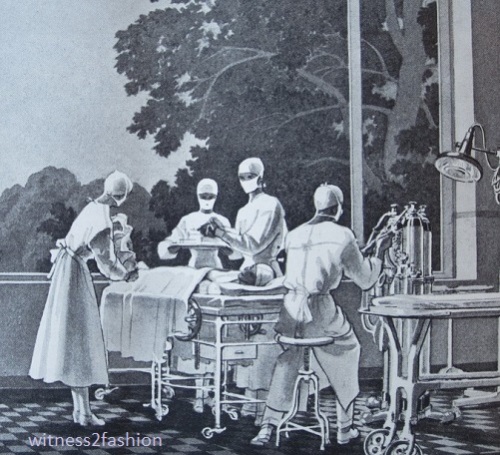
An artist’s idea of an operating room, Delineator, Sept. 1934.
Anyone who grew up — as I did — watching the 1931 movie Frankenstein every time it was on TV will probably associate these long surgical gowns with Colin Clive shrieking, “It’s alive! It’s aliiiiive!“
But it never occurred to me that Butterick would offer sewing patterns for surgical gowns and dentists’ smocks. We now order such things from specialty uniform supply houses.
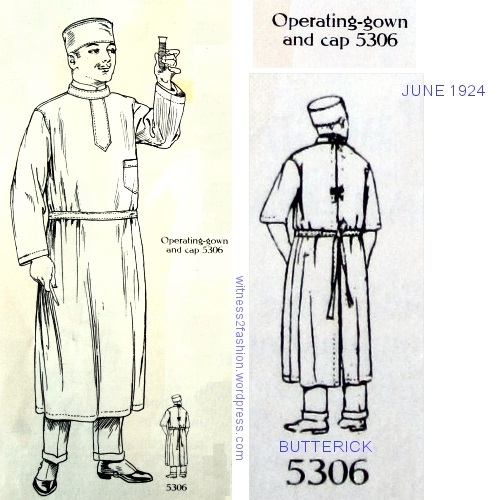
Butterick pattern 5306 is a doctor’s operating gown and cap. From Delineator, June 1924.
I hope no doctor operated in his spats…. And — maybe it’s the test tube — but there’s a touch of Gene (Young Frankenstein) Wilder in his eyes.
Butterick suggested it was “much less expensive” to make gowns like this than to buy them.
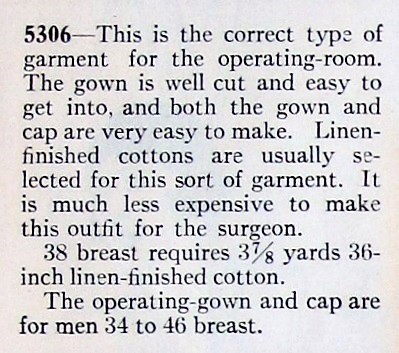
During World War I, Red Cross Volunteers made surgical gowns, robes for hospitalized soldiers, specialized pajamas for hospital and convalescent use, hot water bottle covers, bed linens, and surgical dressings, among other things.
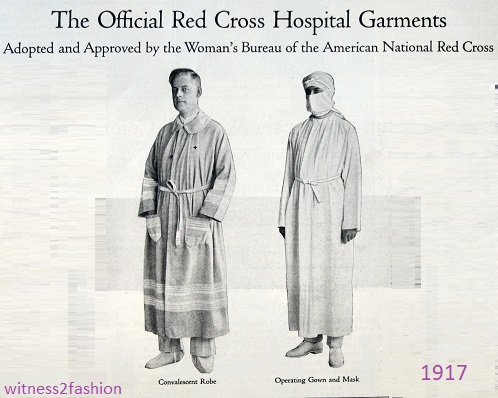
Patterns for these officially approved hospital supplies were available for ten cents; this article ran in Ladies Home Journal, Delineator, and other women’s magazines in the fall of 1917. These images are from Ladies’ Home Journal, December 1917.
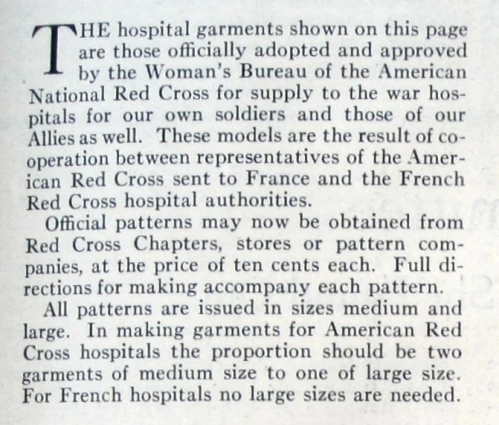
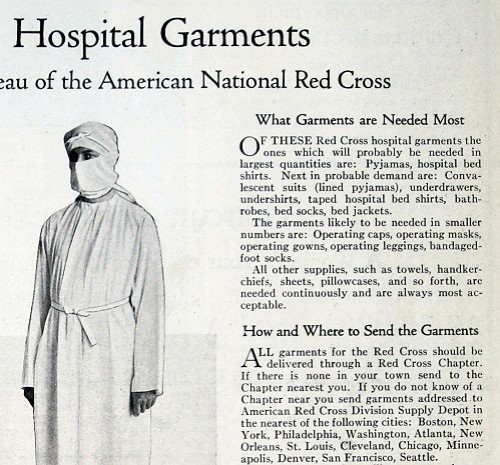
LHJ, Dec. 1917. The urgent need for such hospital supplies brings home some of the horror of the war, in spite of government censorship at the time.
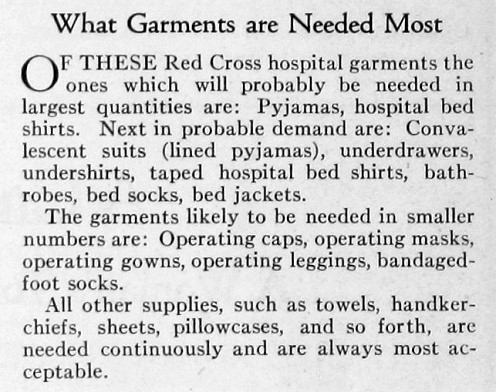
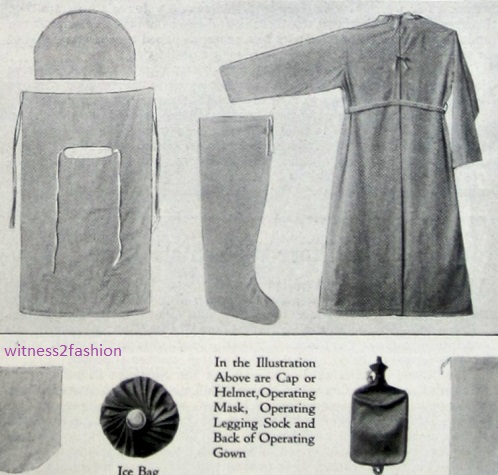
From LHJ, December 1917.
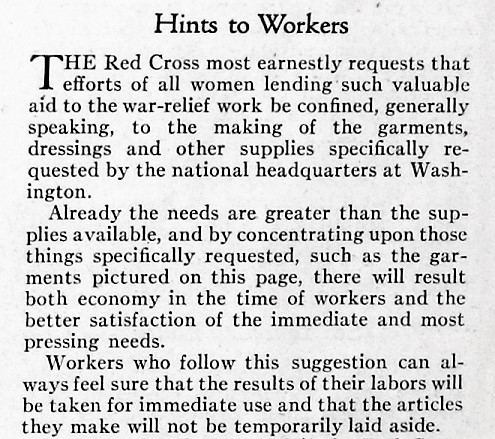
“Already the needs are greater than the supplies available….” American women wanted to help, but their efforts needed to be directed toward the most urgent medical needs in 1917 and 1918.
So the idea of sewing home-made operating gowns was not at all strange in 1924.
A pattern for a dentist’s gown was also offered by Butterick:
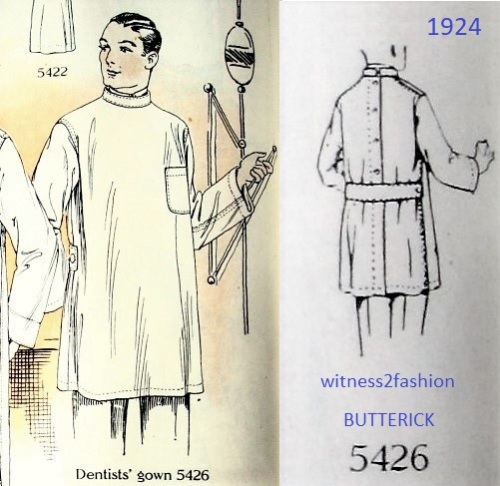
Butterick 5426, a pattern for a dentist’s gown from Delineator, August 1924.

The basic dentist’s gown didn’t change much, except that short sleeves were introduced….
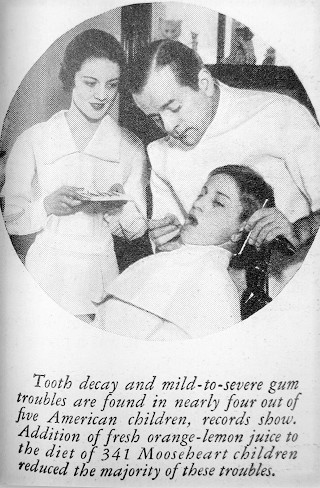
A dentist and his nurse in an ad for citrus fruits. Delineator, June 1934.
Although Butterick assumed that dentists were male in 1924, my friend Barbara collected this interesting vintage garment for a woman, thinking it would have suited a pharmacist or other woman working in a medical field:
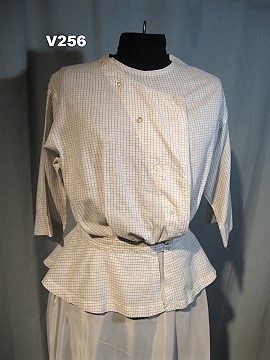
This looks like a woman’s work uniform top; the 3/4 sleeves suggest the World War I era. The neck is plain, and it’s easy to wash and iron.
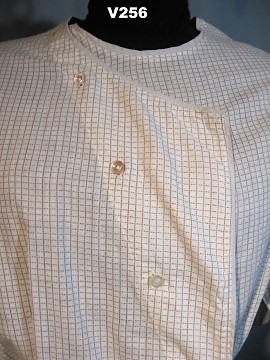
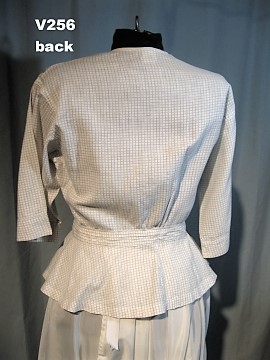
Do you think she was right?

Fascinating! I wonder what the purpose of the placket on the operating gown was. Decoration?
I was wondering where the buttons up the side were, because I was convinced Colin Clive had those, but from internet photos it appears I was mixing him up with Dr. Horrible.
For oldies like me, Dr Horrible was a 2008 mini-series with Neil Patrick Harris. And, from the 1935 Frankenstein film, here is Dr. Pretorius, played by Ernest Thesiger, who had a long career on stage. He liked to sit in the wings doing needle work while waiting for his cue, but, like many in his generation, he had experienced all the real horrors of trench warfare. When asked about World War I, he merely said, “My dears — the noise! and the people!”
I have been looking at your friend’s item of clothing. I’d need to see the construction. The neckline might have had a detachable collar which would have been very common if this was worn in some medical/health environment. The three-quarter sleeve style suggests it might just be a blouse and the split peplum? The front opening is interesting. Does it fold back? I can’t see how it attaches. Are the buttons studs? The other thought that occurred to me is could it be a maternity nursing blouse?
That collection has long since been sold, and I did not take large resolution photos at the time. The garment had a much simpler construction than I’d expect; very few buttons, for one thing. The flap on the front stayed in place — perhaps with a hook and eye? I think Barbara pictured it being worn over other clothes, as a work smock — but sadly, she didn’t keep many records of her purchases or research. I think she collected faster than she could research, and then… Alzheimers…. Once, when I asked about a puzzling garment, she smiled sadly and said, “I thought I’d remember:” a bitter reminder to all of us.
Ah, sweet memory. Thank you.